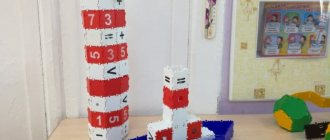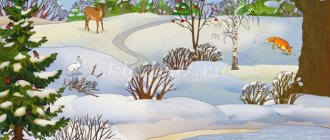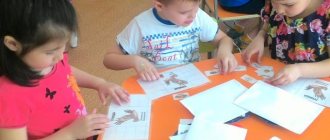Our big planet Earth is very hospitable. It contains millions of creatures, including not only humans. Let's tell children something interesting about insects.
Tell me, is it possible to imagine our life without insects? They were one of the first to appear on our planet, and this was several thousand years before dinosaurs! Regardless of what feelings they evoke in you, they surround us everywhere: in nature, and even at home. Let's go out to the park or maybe the forest. Many insects hide from us under the leaves of trees, in the bark of a tree, or underground.
Mantis
Mantises got their name from their unusual appearance. They fold their forelimbs as if in prayer. Mantises are known for their fearlessness. They attack the enemy without hesitation. Praying mantises cannot be called large; they reach 10-12 cm in length. But when threatened, they do not run away, but remain in place and try to look larger and more impressive. Praying mantises spread their wings, spread their front legs and stretch upward. In this position they sway frighteningly to the sides. This strategy works even with much larger animals. They prefer not to mess with a creature that looks menacing and does not run away.
Mantises feed on insects, but can also snack on lizards, frogs, and even small snakes. They even eat poisonous spiders and ladybugs. Mantises are safe for humans. But if you make them angry, they can bite you painfully. Mantis eggs are protected by special capsules. They are not afraid of low temperatures or even toxic chemicals.
Butterfly
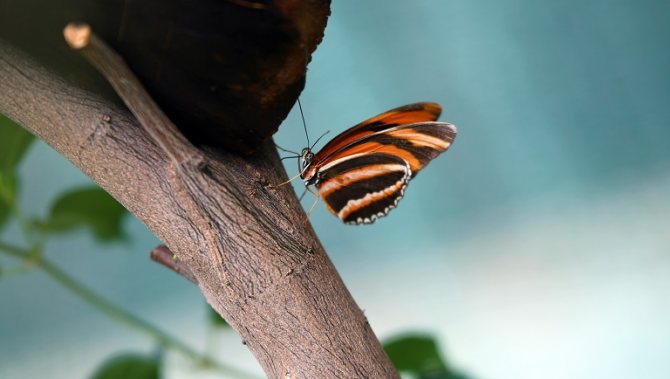
These graceful fluttering creatures always attract attention. Butterfly wings are very beautiful and children like them. And it’s so easy to catch them by the wings when they sit on flowers. But we need to explain to children that this cannot be done. Butterfly wings are covered with special scales that are easily erased when touched with your fingers. Butterflies with such damage to their wings will not be able to fly and will die.
Butterflies come in different sizes - from very tiny 2 mm in wingspan to giants of 28 cm. Their wings are beautifully painted in a variety of colors and patterns. Butterflies have an unusual, curled proboscis with which they feed. Their food is plant nectar and fruit juice.
Children will be very interested in learning about the life cycle of butterflies. A caterpillar emerges from the egg, which does not at all resemble the future bright beauty. The caterpillar feeds on plants and can eat them in huge quantities. When its time comes, the caterpillar turns into a motionless chrysalis, within which amazing transformations take place over a certain period of time - the caterpillar becomes a butterfly. And soon he leaves the doll house. This process can be observed with children. Bring home a caterpillar, place it in a clear container with enough food, and soon you will see it become a chrysalis and then a butterfly.
Lesson with multimedia presentation “Insects”
(slide 3)Message of new information: acquaintance with the structure of a beetle
The teacher tells the children about the origin of the name “insects”,
suggests looking at the structure of a beetle and naming its body parts
-What is located on the insect’s head?
-How many pairs of legs does an insect have?
(slide 4)
Didactic game “Where do insects live?”
The teacher suggests naming the habitats of insects based on the image
(slide 5)
Guessing the riddle
The teacher asks you to guess the insect that lives in the house?
(slide 6 )
Message about bees
The teacher reports interesting facts from the life of a bee
(slide 7)
Products of bees' labor
The teacher asks you to name what benefits bees bring?
(Slide

Didactic game “Assemble a bee”
The teacher offers to assemble a puzzle of 8 cards and compare with the sample
(Slide 9)
Physical education lesson
(Slide 11)
Guessing the riddle
The teacher suggests answering who lives in such a house?
(Slide 12)
Message about ants
The teacher reports interesting facts about ants
(Slide 13)
Didactic game “Help the ant climb to its friend”
The teacher offers to help the ant and draw the path of the ant to its friend
(Slide 14)
Guessing the riddle
The teacher suggests answering why she was called that?
(Slide 15)
Message about ladybugs
The teacher reports interesting facts about the ladybug
(Slide 16 - 20)
Didactic game “Whose shadow?”
The teacher offers to choose from 3 insects the one whose shadow is depicted
(Slide 21)
Physical education lesson
(Slide 22)
Guessing the riddle
The teacher suggests answering who will emerge from the cocoon?
(Slide 23)
Message about butterflies
The teacher reports interesting facts about the ladybug
(Slide 24-26)
Didactic game “Who’s the odd one out?”
The teacher suggests choosing an extra picture that doesn’t depict an insect.
(Slide 27)
Protecting insects from enemies
The teacher suggests talking about how insects protect themselves from enemies
(Slide 28)
Insect protection
The teacher asks you to think and answer the questions:
—
Do we need to protect insects and why? -What can we do for this?
The teacher suggests thinking about if children had the opportunity to turn into insects, then who would they want to turn into and why?
Relaxation. "The Flutter of a Butterfly"
The teacher invites the children to lie down on the mat, close their eyes and remember the insect they liked.
(music sounds)
Imagine a beautiful summer day. You are lying on a green meadow. You feel warm and comfortable, you breathe easily and calmly. Imagine that you are light butterflies with large and beautiful wings. Your arms are light and light—like the wings of a butterfly. And your body also became light, light, flapped its wings and flew. With every inhalation and exhalation you float higher and higher in the air. You feel good and pleased. But now it's time to return home. Stretch and on the count of three, open your eyes. Smile at each other.
Informational resources:
1. Pictures from the site www.Yandex.ru;
2. S.I. Karpov, V.V. Mamaeva “Development of speech and cognitive abilities of preschool children” 6-7 years old S-P, 2010
3. O.A.Skorolupova. Classes for preschool children on the topic: “Insects.” M, 2006
Ant
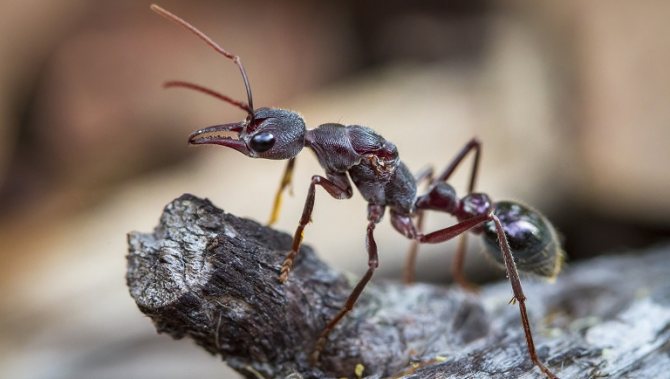
These insects are very hardworking, friendly and organized. They are always in a hurry and running somewhere. It is very interesting for children to observe the life of an anthill in nature. Ants are very beneficial insects. They cleanse nature of garbage. One ant is stronger than an elephant. Of course, he will not be able to lift the load that an elephant lifts. But an ant can lift a weight that is 10 times its weight. And an elephant cannot even lift a load equal to its weight.
Ants are excellent builders. Their anthills are complex houses with apartments, well-designed ventilation, storage rooms, bedrooms, children's rooms, garbage bins and toilets. Ants strictly maintain cleanliness in their homes. Inlets and outlets serve to supply air inside. They are guarded by soldier ants.
There is a spacious room right under the roof of the anthill, which is the first to be heated by the sun's rays. Ants bask there in the spring. In the depths of the anthill there is a bedroom in which the ants spend the winter. There are separate storerooms for grain and meat food. There is also a “cow barn” with aphids. Ants exploit these insects by eating the sweet substance they secrete. They protect and protect aphids, carry them to the anthill for the winter, and take them out to new succulent plants in the spring.
In the anthill there is a special “royal” room for the ant queen. She is engaged in laying up to 1000-1500 eggs daily. Worker ants take care of it.
Summary of an open lesson on the topic: “Insects are our little friends.”
Summary of an open lesson on the topic: “The world of insects.”
Tasks:
Educational: clarify and expand children’s knowledge about insects, their appearance, lifestyle, and the benefits they bring to nature.
Developmental: develop mental activity, curiosity, attention, memory, speech. To arouse interest in the world around us, to form realistic ideas about nature. Expand your horizons of environmental ideas.
Educational: Continue to cultivate a love for nature and respect for it
Progress of the lesson.
1. Organizational moment
Guys, we have guests today, let's say hello and sit on a chair.
— Tell me, what time of year is it outside?
Name the spring months (March, April, May).
Let's list the signs of spring?
With the onset of spring, many things change in nature. And along with spring, little residents wake up. Look at the clearing and name who you see?
Children see toys on the table and name them. (Cockroach, beetle, bee, ladybug, fly, bee, grasshopper, spider).
How can you call everyone in one word? (Insects)
Are all the insects here? (No, a spider is not an insect, it does not have 6 legs, like all insects)
Guys, listen to the riddle. Zhu-zhu-zhu, zhu-zhu-zhu I’m sitting on a branch and I keep repeating the sound “zh”. (beetle) - This is a cockchafer.
Let's count how many legs he has? (6) - What else does the cockchafer have (head, abdomen, legs, wings) - How does it move? (crawls, flies) - Where does he live? (on the tree)
- Does he have any enemies? (birds) - How does he escape? Hides: brown color - the color of wood. Let's meet another resident of the clearing.
That cow does not moo, has no horns, hooves, tail, does not give us milk, lives under the leaves. The beetle wears a red cloak with black dots. Plants are a guardian. This one cleverly fights harmful aphids...
- How many paws?
– How does it move (crawls and flies) – Where can we meet b. k. (in the meadow, trees, grass) - What color b. To.? Look how bright she is! It is clearly visible in the grass and on the bark of trees. Any bird will notice it. How can she hide (children's assumptions). — It turns out that the ladybug doesn’t have to hide, because she has a secret: she herself knows how to defend herself from enemies. In a moment of danger, she secretes a liquid called jelly. This liquid smells very bad, which is why no one eats the ladybug. And since she, like a big cow, gives milk, she was called “ladybug”. It is bright red for everyone to see: it is dangerous to eat!
Guys, how is a ladybug useful? - Ladybug eats aphids - which eat tree leaves.
3 task. "Make a whole from parts"
— This magic box contains parts of the whole picture. Take each part, those with a red part will go to this table, those with a blue part will go to this table. Connect the parts together on the table. - Children, let's come to this table.
Who is this?
The ant has 6 legs and a pair of short antennae.
Notches on the body divide it into several parts: Head, chest, abdomen
. This is what an ant looks like. - How does he move? (runs)
- Where does he live? (in the forest, in an anthill) - Guys, why do you think ants are called forest orderlies?
They eat small bugs that eat trees, i.e. ants save trees. -Now let's go to another table. - Who’s here? (Grasshopper)
Guys, why is the grasshopper called the “jumping champion”? — Unlike an ant, a grasshopper has very long antennae and powerful legs, with the help of which it moves deftly and skillfully.
Like all insects, how many legs does a grasshopper have?
Guys, how many of you know where a grasshopper’s ears are? - No, imagine - on your feet. - What an amazing insect, the grasshopper. - Does he have any enemies? - How does he escape from them? (where he lives, what color). K. green - the color of the grass. Now guys, let's play and turn into little grasshoppers.
PHYSMINUTE. Raise your shoulders! Jump, grasshoppers! Jump-jump, jump-jump! We sat down, ate some grass, and listened to the silence. Jump high again, Jump deftly and easily!
Do you like miracles? Relax and listen to the miracle that happens in spring.
The Tale of a Butterfly.
Spring has arrived on earth. She brought with her many, many colorful silks to decorate forests and meadows with them, to dress butterflies and bugs, so that everything around would look elegant and festive. Spring asked the red Sun: “Warm the Earth better.” Wake up everyone who slept soundly during the long Winter. The Sun warmed the Earth. Various insects crawled out and all crawled and flew into a spacious forest clearing. Spring was waiting for them there with its gifts. The butterflies were the first to appear and said: “Spring, give us bright, elegant clothes.” “Okay,” Vesna answered and began to dress them up. She gave the white butterfly a bright white dress.
Lemongrass is soft yellow, like an autumn leaf.
She wore a mourning butterfly in a black velvet outfit with a white lace border.
But the cheerful nettle butterfly chose a colorful dress, reddish-red with dark and blue specks.
Spring itself admired their new bright outfits. Everyone was happy with the spring gifts and hurried to the meadows and fields to do their business. - This is such a fairy tale. Interesting? - And indeed, you can’t help but admire the butterfly: the pattern - the right wing is the same as the left. The legs and body of a butterfly, like many insects, are covered with hairs, which help them pollinate flowers, because more pollen sticks to the shaggy, fluffy hairs. “And if the body and legs of insects were smooth, would they be able to carry pollen?”
— I propose to conduct an experiment and make sure...? Experiment - I have magic fingers that, when worn, can turn into butterflies. One is smooth and shiny, the second is terry, fluffy, fleecy, shaggy, like the fibers on the body of insects. “We have semolina on our tray, like pollen on a flower.” “Now you and I will see on which finger the most pollen will stick.” - Look, which finger is the semolina stuck to? - Why did the semolina stick to the blue one? - That's why insects are covered with villi.
- Guys, look what's here. What is this? (honey) Who left it here?
Who makes honey? That's right, bees. And here is the bee itself. Look how brightly colored it is.
Why do you think? The bee seems to say, “Don’t come closer, I’ll sting you!” - The bee extracts pollen and nectar from flowers, and processes the nectar into honey. And it turns out such tasty and very healthy honey. Do you like honey? Do you want to try it and see that it is very tasty and healthy? RESULT - Our lesson is over. -Who did we meet today? (chafer beetle, ladybug, butterfly, ant, grasshopper, bee) - How can you call them in one word? (insects) - They are all so different, but what do they have the same? (6 paws) - What other insects do you know? (mosquito, fly, dragonfly, cockroach)
— Did you like it? What was interesting? What did you do and remember? Which insect do you want to know even more about?
Ladybug
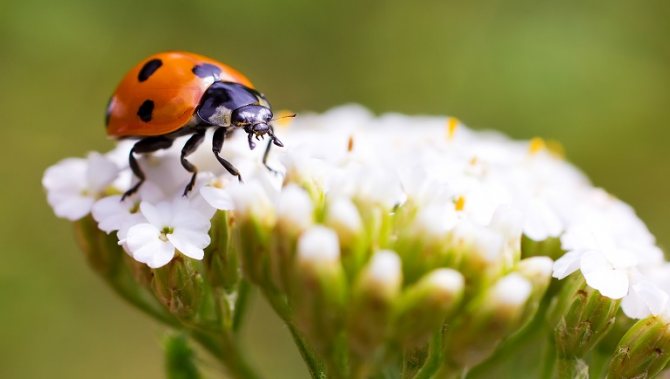
Everyone knows the cute red bug with black dots. Surely every child in the summer put a ladybug on his hand and said the rhyme: “Ladybug, fly to the sky, there are your children.” Children will be surprised to learn that this bug is actually a poisonous predator. Ladybugs destroy aphids, dangerous garden pests. They are even distributed in fields and gardens specifically for this purpose.
The red coloration of the ladybug signals to birds and other enemies that it is poisonous. When attacked, she injects a sharp-smelling liquid from her paws. This smell warns predators of danger. Ladybugs also know how to pretend to be dead to save their lives.
About insects for children 6-7 years old
Conversation for older preschoolers “Journey to the world of insects”
Our big planet Earth is very hospitable.
It contains millions of creatures, including not only humans. Let's tell children something interesting about insects. Tell me, is it possible to imagine our life without insects? They were one of the first to appear on our planet, and this was several thousand years before dinosaurs! Regardless of what feelings they evoke in you, they surround us everywhere: in nature, and even at home. Let's go out to the park or maybe the forest. Many insects hide from us under the leaves of trees, in the bark of a tree, or underground. Who are insects There are countless insects on earth. This is the most numerous and diverse class of animals. These include hard-working bees, bumblebees, wasps, grasshoppers, all kinds of beetles, flies, dragonflies... Insects have a number of distinctive features, the presence of which classifies them as their species. Conventionally, they can be divided as follows: • The word “insects” itself comes from the word “incise” and literally means “an animal with notches.” All insects have notches. It looks as if the insect's body is divided into separate joints. • The body of an insect consists of three parts - head, thorax and abdomen. • All insects have 6 legs and wings. Attention: centipedes and spiders are NOT insects. There are about three million species of insects in nature, but scientists have studied only about a million. The number of insects exceeds the number of all animals and fish on earth and even people. Can you imagine how many there are? Let's talk about some of them separately. And it is best to introduce children to insects through their pleasant representatives. Butterfly
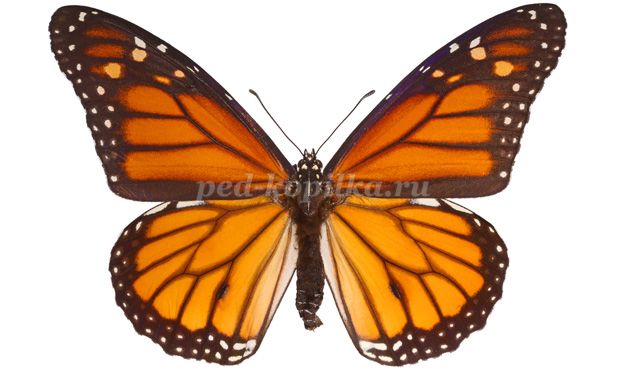
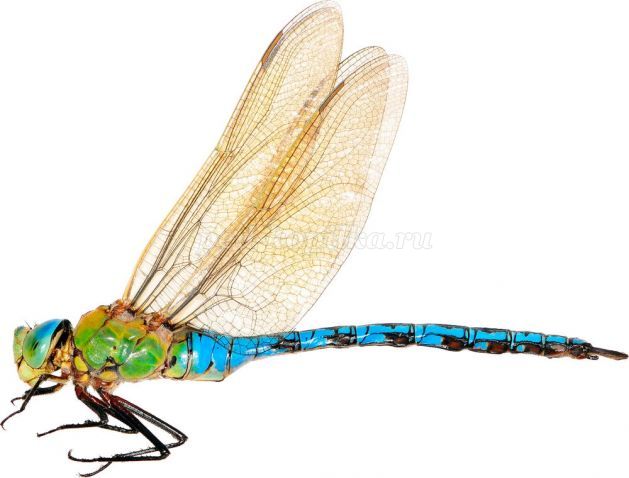
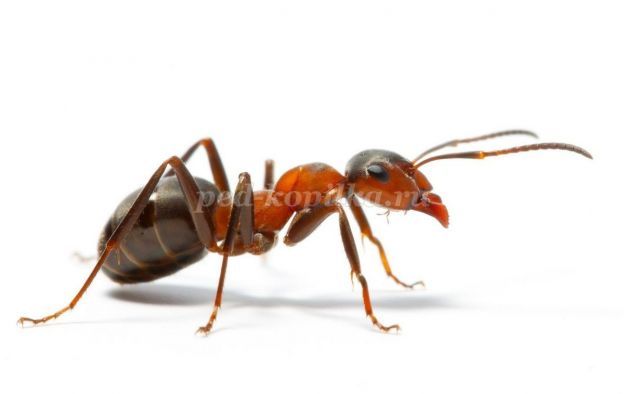


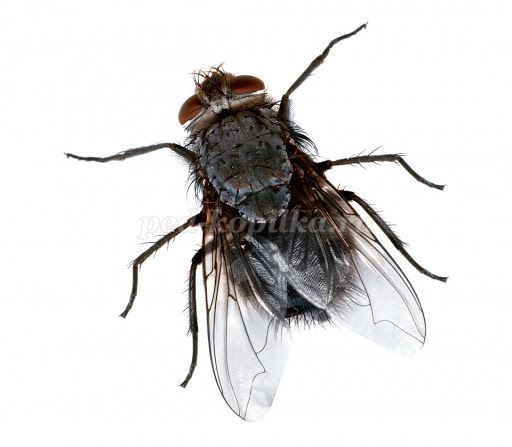
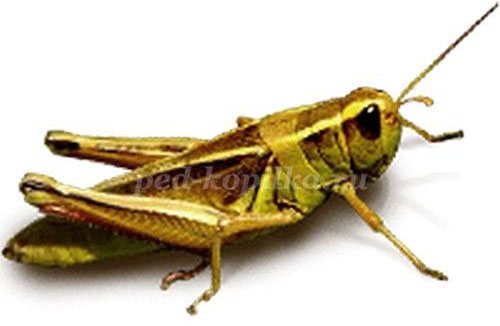
We recommend watching:
Quiz with answers for children of the preparatory group on the topic “Insects” Tale of the Maybug for children 3-6 years old Tasks for speech development on the topic: Insects Notes of GCD in the senior group of kindergarten. Topic: "Insects"
Similar articles:
Conversation about the caterpillar for children
About beetles for children 5-8 years old
About mosquitoes for children
About the grasshopper for children
About the wasp for children
Bee
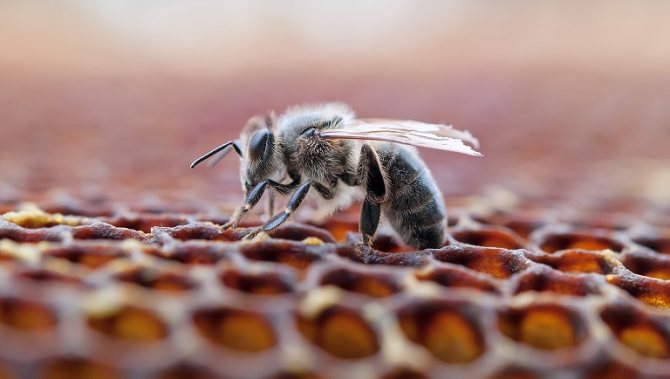
Hardworking bees provide humans with tasty and healthy honey. Their shaggy body is covered with villi and has a striped color. Bees use their long proboscis to suck nectar from plants. They process it and turn it into honey. Bees store honey in honeycombs. In the cold season it serves as food for them. To ensure a well-fed winter, bees work tirelessly all winter and summer.
Bees live in large hive families of several thousand insects. Each family member has his own responsibilities. The “queen” lays eggs, builders build honeycombs, workers collect nectar, deal with larvae and guard the hive. Bees build their houses from wax. They make honeycombs out of it with cells in the shape of regular hexagons. The cells are connected to each other and are all the same size, as if the bees were using a ruler.
People obtain honey in a way that does not harm the bees. They only take a small portion of the honey from the hive. Previously, bees were only wild. To get honey, people had to look for bee houses in the forest. It's difficult and long. Then they came up with the idea of cutting down trees with hollows inhabited by bees and placing them in a convenient place. And after that, people began to build special houses for bees - hives - and populate them there. A bee city of hives is called an apiary.
Bees have a stinger and they bite very painfully. But they always do this only for protection. There is no need to be afraid of bees, but you should treat them with caution and respect.
Fly
This is the insect that most often flies to visit us. The fly is black or brown with a blue or green tint. She has two large eyes, which are divided into 4 thousand facets, and small fluffy antennae that serve her to detect food. Flies taste food with the help of their paw; it is with their paw that they feel the taste and understand whether the food is edible or not. In fact, flies are very dangerous for people; they carry a bunch of infections (typhoid, anthrax, tuberculosis and much more). They can carry the infection 20-25 kilometers.
Interesting facts about flies
- The most dangerous type of fly lives in Africa, they are called “tsetse”. They carry the sleeping sickness virus, which kills tens of thousands of people and animals every year. Tsetse flies attack any moving warm object, even a car. The exception is the zebra, which the fly perceives as just a flickering of black and white stripes.
- The life of a fly is short - from 8 to 20 days, depending on the environment
- Flies live in all corners of the planet. Their number exceeds 750,000 species.
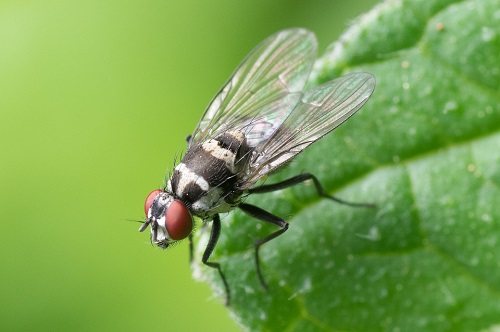
Wasp

Wasps are similar to bees, but they are completely different insects. They also love sweets and feed on flower nectar and fruits. But they don’t know how to make honey. Sensing something sweet, the wasps immediately fly away. Therefore, when relaxing in nature, you need to be careful. A wasp sting is very painful. The insect stings if you accidentally crush or step on it.
Wasps hang their houses on tree branches or in attics. They make them from paper. Wasps scrape wood with their jaws and mix it with their saliva. From these lumps they make thin strips of paper, from which they build multi-layered, durable and warm houses. The female wasp lays eggs in them. And the rest of the wasps take care of the larvae that emerge from them. Under no circumstances should you touch wasp housing. The insects immediately rush to their defense and attack.
Grasshopper
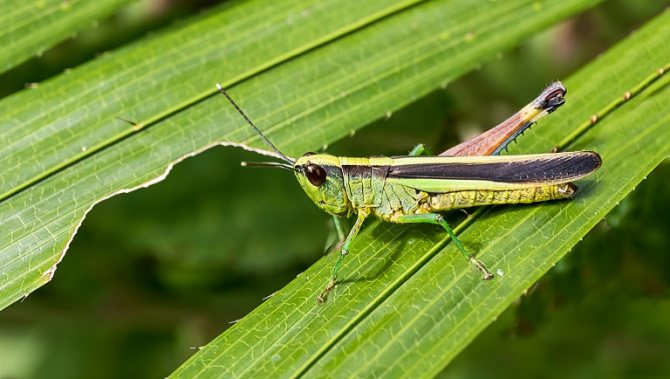
It is not easy to spot a green grasshopper in the grass. You can only hear its loud chirping. Grasshoppers have a slender body, long antennae and powerful legs, with which they can jump very high. Their ears are located on their legs. And grasshoppers “sing” using their wings. They rub them against each other, like a bow against the strings of a violin, and the result is a loud chirping sound. Grasshoppers, seemingly harmless at first glance, are predators. They hunt butterflies, flies, and insect larvae. Grasshoppers escape from their enemies with the help of protective coloring and dexterity. In summer, females hide their eggs in the ground. In the spring, larvae will emerge from them, which will soon become grasshoppers.
Books about insects
This is truly an amazing and unique world of insects. When talking with children about insects, pay attention to interesting books, among which I can recommend my book “The World of Insects.”
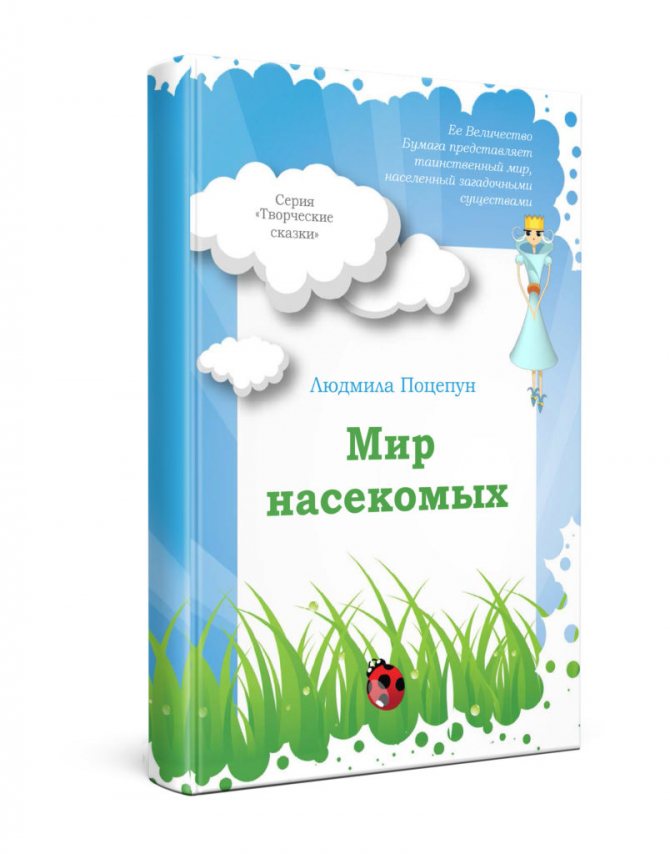
"WORLD OF INSECTS"
I also suggest you read fairy tales about insects:
- Ivan Andreevich Krylov “Dragonfly and Ant”.
- Vitaly Valentinovich Bianchi “The Adventure of the Ant”
- Korney Chukovsky “Tsokotukha Fly”
- Larry Yan Leopoldovich “The Extraordinary Adventures of Karik and Valya”
- Complete encyclopedia "Insects"
- The series of books “Entertaining Zoology” from Alpina Publisher will delight you with an extraordinary number of amazing facts in the animal world.
And here are poems and riddles about insects.
Dragonfly
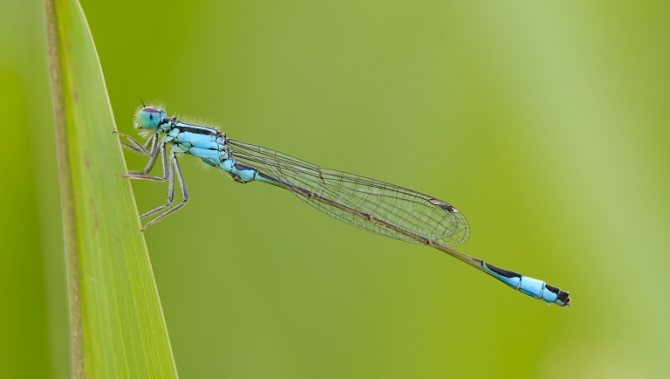
Dragonflies are very ancient insects. They appeared about 350 million years ago. Swift and fast, they are created by nature to hunt and attack. They fly incredibly fast and are able to change the direction of their movement with lightning speed. This can often be seen in the summer. Dragonflies land anywhere very rarely. They spend almost their entire lives in flight; their legs are not at all adapted for walking. And they fly at the speed of a car - up to 14 km/h! Dragonflies can control their two pairs of wings independently. They can fly forward, backward, sideways and hover in place. Dragonflies have simply huge eyes, which consist of 28 thousand individual eyes. These insects are very voracious. In just an hour they can catch and eat up to 40 flies!
Mosquito
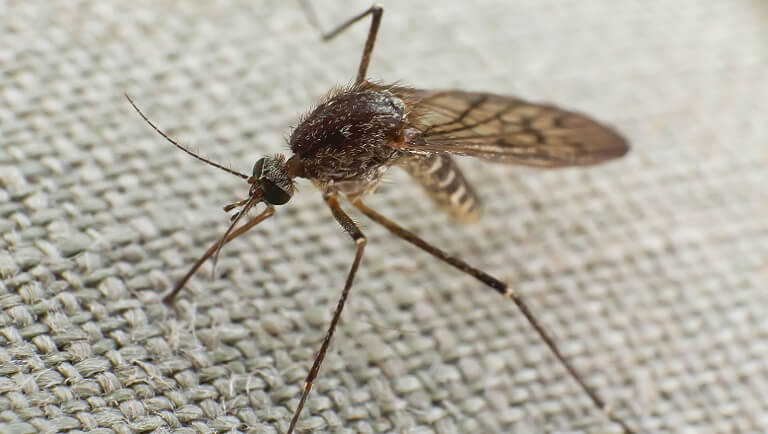
These biting flying insects are familiar to every child. Not a single summer is complete without itchy bite marks, which cause a lot of anxiety for children. It is interesting that only female mosquitoes bite. Males are absolutely harmless and feed on plant nectar. When a female mosquito bites, it injects saliva into our skin, which contains special substances that slow down blood clotting. It is this that causes redness, swelling, itching, and in some, a severe allergic reaction.
The squeak of mosquitoes is created by the rattling of their wings. Mosquitoes live only 1-2 months. During this period, females drink 5-7 times more blood than their own weight and lay up to 300 eggs. Eggs develop in stagnant water. Air-breathing larvae emerge from them. That's why they float on the surface of the water. The larvae then turn into pupae, from which mosquitoes then emerge.
Firefly

The flashes of these bugs on a summer night give a feeling of magic and wonder. The glow is produced by a special chemical reaction in the firefly's body. Their light comes in red-yellow and green shades, of varying duration and brightness. And they can glow in different ways. The glow can be continuous, intermittent, pulsating, or flashing. In different species, males, females, or both glow. Fireflies are predators and hunt other insects.
Chafer
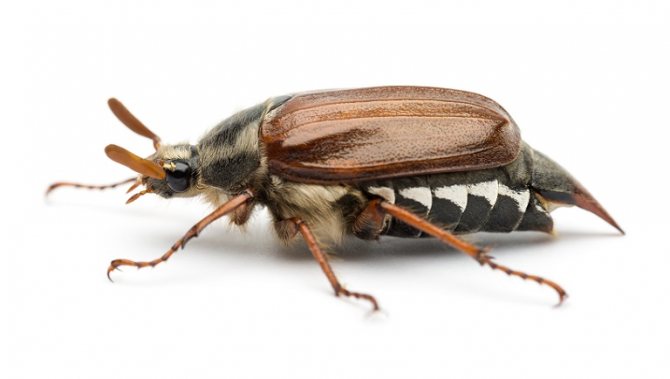
In the spring, in May, large beetles appear in the green forest. Their backs look like smooth brown acorns. They are called May beetles or beetles. They live only one month, during which they lay eggs. Khrushchi are dangerous pests. Their larvae live in the ground, large, with powerful jaws. They feed on plant roots. The larvae live in the ground for 3-4 years and during this time they eat everything around them. Where there are many larvae, the plants dry out and die. The larva turns into a pupa, and in the spring into an adult beetle. He breaks his way and flies up to freedom.
stick insect
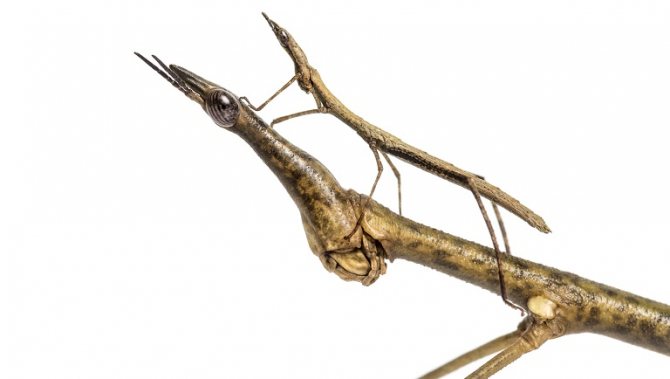
Amazing and unusual insects. They live mainly in the tropics and are exotic for our area. They really look like sticks in appearance and color. But there are species that look like pieces of bark and leaves. They are even classified as a special class - ghosts. Stick insects can range in size from 2 cm to 35 cm in length. These insects are ideally suited for camouflage. Even when moving, they slowly sway to the sides, like branches swaying in the wind. And at the slightest danger they freeze in place. A frozen stick insect cannot be distinguished from the surrounding nature at all. Predators do not perceive it as prey and leave. Stick insects feed on plant leaves, fruits, and berries.
In a cruel world where all insects fight for their lives, stick insects have chosen their path. They are not aggressive, they do not have sharp teeth or claws, and they cannot run fast. Their only method of defense is to be invisible and live a quiet life in the surrounding vegetation.
Draw children's attention to the world around them, to the insects that exist in nature. And such as stick insects, butterflies, large beetles can be seen in special zoos with insects - insectariums. Watching them is very interesting and educational. Children learn to understand and protect nature and treat every insect, even the smallest one, with respect. After all, every insect is needed on our planet for some reason.
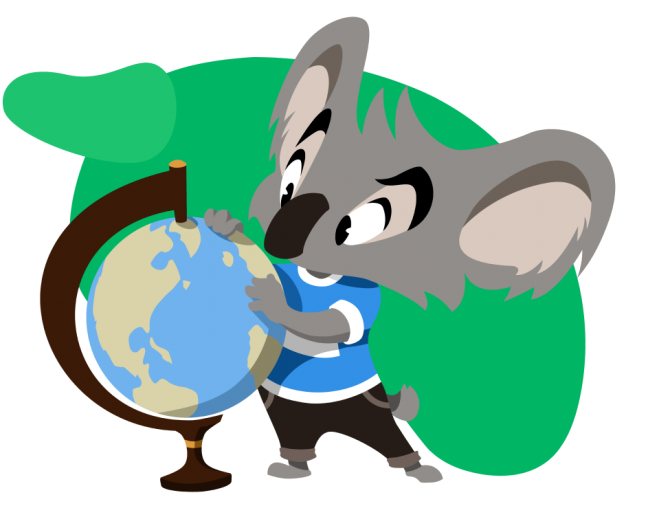
Geography courses for children 6-13 years old
We introduce children to the most important places in Russia and the world in a fun format through games, stories and riddles
find out more
Who are insects
There are countless insects on earth. This is the most numerous and diverse class of animals. These include hard-working bees, bumblebees, wasps, grasshoppers, all kinds of beetles, flies, dragonflies...
Insects have a number of distinctive features, the presence of which classifies them as their species. Conventionally, they can be divided as follows:
- The word “insect” itself comes from the word “incise” and literally means “animal with notches.” All insects have notches. It looks as if the insect's body is divided into separate joints.
- The insect's body consists of three parts - head, thorax and abdomen.
- All insects have 6 legs and wings. Attention: centipedes and spiders are NOT insects.
There are about three million species of insects in nature, but scientists have studied only about a million. The number of insects exceeds the number of all animals and fish on earth and even people. Can you imagine how many there are?

Let's talk about some of them separately. And it’s best to introduce children to insects through their pleasant representatives:
